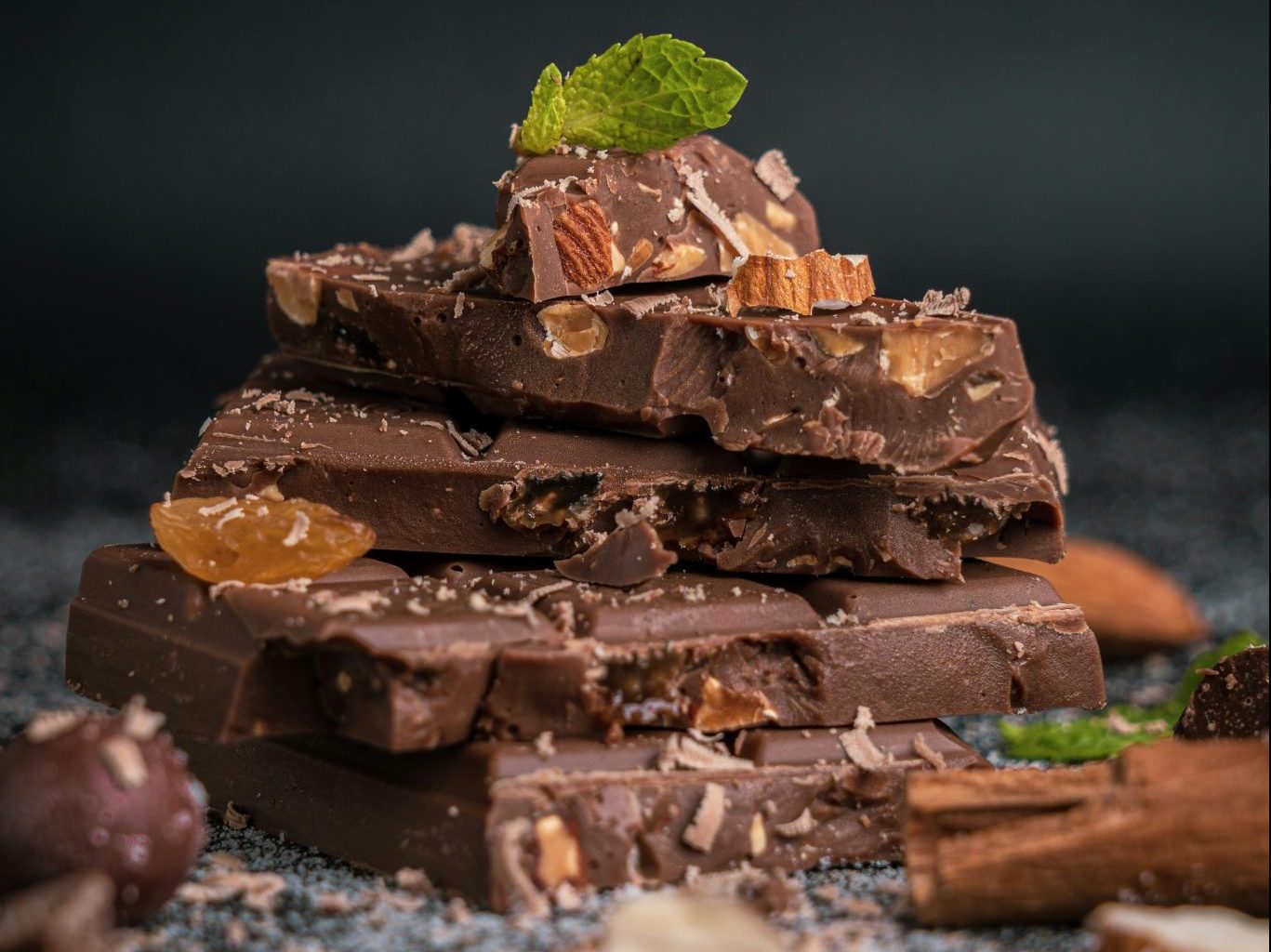Chocolate: Culinary Techniques, Tips, and Ethical Choices

Introduction to Chocolate
Who doesn’t love chocolate? This delightful treat is more than just a sweet indulgence; it’s a global phenomenon that brings a little bit of joy into our lives. Whether it’s the comfort of a hot chocolate on a rainy day in Manchester or the excitement of discovering a new artisan bar, chocolate has a special place in the hearts of many across the UK and beyond. It’s the go-to for celebrations, a reliable pick-me-up, and for many, a favourite treat.
The Origins of Chocolate
Making chocolate begins with the cacao tree, Theobroma cacao, meaning “food of the gods” in Greek. Esteemed by the ancient Maya and Aztecs, cacao was not just a source of nourishment but a potent symbol of life and fertility. These civilizations revered cacao for its vitality and divine properties, utilizing it in everything from sacred ceremonies to a form of currency. The traditional preparation involved a complex process of fermenting, roasting, and grinding cacao beans, culminating in a frothy, bitter beverage far removed from the chocolate we know today.
Chocolate in Europe
Chocolate’s arrival in Europe marked a pivotal chapter in its history. The Spanish, upon encountering cacao in the New World, introduced sugar and milk, significantly altering its flavour profile, and making it more palatable to European tastes. This sweetened version of chocolate quickly became a status symbol among the European elite and was a luxury only the rich could enjoy, sipped in opulent halls and royal courts.
Chocolate in Great Britain
As chocolate grew in popularity, it became more accessible to everyone. In Britain, chocolate houses became the hubs of social activity, predating the tea rooms that would follow. The industrial revolution followed by the invention of the chocolate bar by Joseph Fry further democratised chocolate, reducing the cost, increasing the availability, and paving the way for the modern chocolate industry.
Health Benefits of Chocolate
If there was ever a treat you could justify as being good for you, it is certainly chocolate! However, as we delve into its many health benefits, it’s important to remember that not all chocolate is created equal. Dark chocolate, in particular, is a powerhouse of nutrients that can positively impact your health when enjoyed in moderation.
Nutritional Profile of Chocolate
Dark chocolate is rich in iron, magnesium, copper, manganese, and a few other minerals that are essential for our body’s well-being. But before you reach for just any chocolate bar, remember that the higher the cocoa content, the more benefits you’ll reap. Aim for bars with at least 70% cocoa to get the most out of your chocolate indulgence.
Cardiovascular Benefits
Several studies suggest that dark chocolate can support heart health in various ways. Its ingredients can help lower blood pressure and improve blood flow to the brain and heart. Moreover, it might reduce the risk of developing heart disease by improving cholesterol levels. The flavonoids in dark chocolate are the heroes here, helping to increase the flexibility of veins and arteries.
Cognitive and Mood Enhancements
Ever noticed how a piece of chocolate can lift your spirits? There’s science behind that blissful bite. Chocolate contains compounds that can enhance brain function and mood. One of these is phenylethylamine (PEA), which is the same chemical your brain creates when you feel like you’re falling in love. Additionally, the flavonoids can improve cognitive function, especially in the elderly, by boosting blood flow to the brain.
Antioxidant Properties
Chocolate is loaded with organic compounds that function as antioxidants, such as flavonoids and polyphenols. These antioxidants can neutralize free radicals and reduce oxidative stress, potentially lowering the risk of chronic diseases. A fun fact to share at your next dinner party: dark chocolate has more antioxidant activity, polyphenols, and flavonoids than many other fruits, including blueberries and acai berries.
Culinary Uses of Chocolate
Chocolate in Savoury Dishes
Chocolate’s role in savoury dishes might surprise those who haven’t ventured beyond desserts. Its rich, complex flavour can add an incredible depth to stews, chillis, and sauces. A small amount of dark chocolate can round out the flavours in a rich beef stew or add a subtle complexity to a spicy chilli. In Mexican cuisine, mole, a rich, flavourful sauce made with a blend of spices, chilli peppers, and chocolate, makes for a delicious dish that you must try. As Japanese curry is often made with curry blocks, many cooks add “secret ingredients” to distinguish it from the base flavour, chocolate and coffee are two popular choices for adding depth!
Hot Chocolate and Chocolate Tea
Let’s not forget where chocolate started, as a drink! There is a comforting allure to hot chocolate and the traditional version, made from melted chocolate and milk, is a world away from the powdered versions. For a real treat, gently heat milk with a few chunks of high-quality dark chocolate, stirring until smooth and creamy. Add a pinch of cinnamon or vanilla for an extra flavour dimension. Chocolate tea, made from cocoa shells or nibs, offers a lighter way to enjoy chocolate’s flavours. It’s a fantastic option for those looking for the taste of chocolate without the richness or calories of a bar or hot drink. Brewed much like any other loose-leaf tea, chocolate tea can be a cosy, antioxidant-rich addition to your tea collection.
Tempering Chocolate
Tempering is a technique that involves carefully melting and cooling chocolate to stabilize it. This process ensures that the chocolate has a smooth, glossy finish and a satisfying snap when broken. While it might sound daunting, tempering is achievable at home with a little patience and practice. The key is to monitor the temperature closely; dark chocolate should never exceed 32°C, milk chocolate 30°C, and white chocolate 29°C.
Ethical Considerations in Chocolate Consumption
As we revel in the delights of chocolate, it’s important to pause and consider the ethical implications behind our chocolate choices. The chocolate industry, while bringing joy to millions, also faces challenges related to sustainability, fair labour practices, and environmental impact. Being mindful of these issues allows us to enjoy chocolate in a way that aligns with our values, supporting not just our taste buds but also the well-being of cocoa farmers and the planet.
Understanding Ethical Issues
Much of the world’s cocoa, the primary ingredient in chocolate, comes from West Africa, where issues such as child labour, underpaid farmers, and deforestation are significant concerns. These practices not only undermine the ethical foundations of the chocolate we enjoy but also threaten the sustainability of cocoa production itself.
Making Ethical Chocolate Choices
Thankfully, making ethical chocolate choices is becoming easier, thanks to a growing number of certifications and labels that help consumers identify products that align with ethical standards. Look for certifications like Fairtrade, Rainforest Alliance, and UTZ, which indicate that the chocolate has been produced under fair labour conditions and with attention to environmental conservation.
Conclusion
Chocolate is more than just a treat; it’s a journey through history, culture, and culinary exploration. As we’ve seen, its versatility in the kitchen is unmatched, offering endless opportunities for creativity, whether in crafting the perfect dessert, enhancing savoury dishes, or rediscovering the simple pleasure of a well-made hot chocolate. So, let’s continue to learn, create, and enjoy together, with chocolate as our delightful companion. Here’s to many more sweet (and savoury) adventures in the kitchen!
